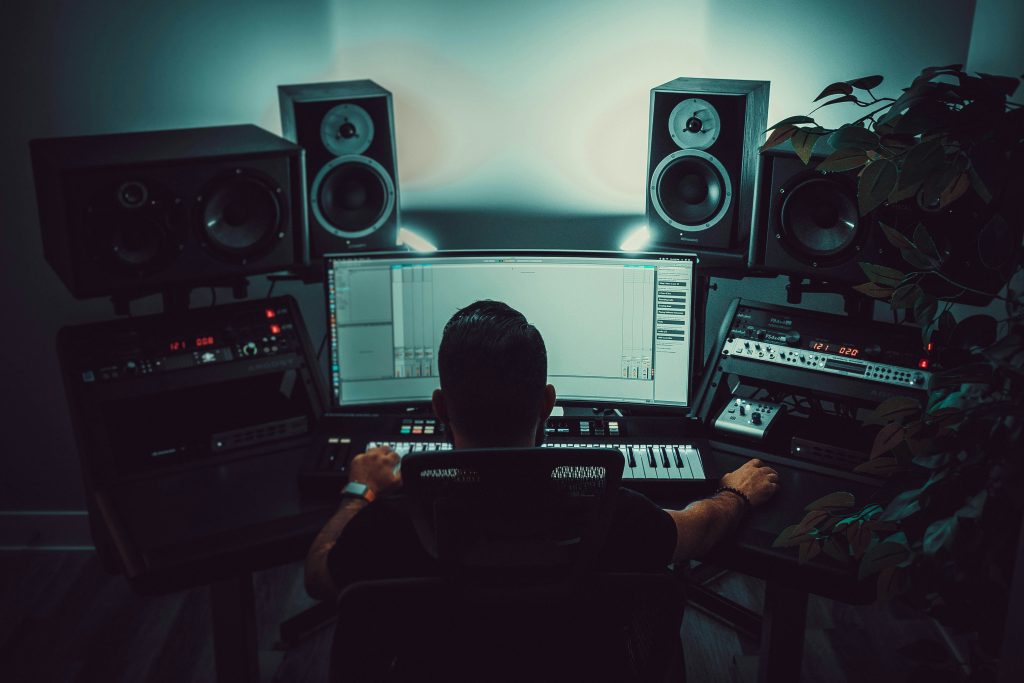Photo Credit: Troy T
The creation and delivery of music to audiences requires collaboration between a variety of creative individuals and businesses, including songwriters, music publishers, performers, producers, and record labels. All of these creative individuals and many others play an important role in crafting and bringing music to audiences, and it’s important that each understands and appreciates their rights under U.S. copyright law. This three-part series explores those rights by discussing: (i) the different types of works and kinds of rights for music under copyright law; (ii) the different types of music licenses; and (iii) the remedies for copyright infringement.
To understand how music and those who create and distribute music are protected and compensated, one must first understand certain copyright basics, because copyright is the primary means by which songwriters, composers, artists, publishers, and other music creators are protected and compensated for their works. To understand copyright in music one must understand that there are two distinct kinds of copyrighted works in any given song—a musical work and a sound recording.
Two Types of Copyrighted Works Protected in a Song
Copyright law protects original works of authorship, including literary, dramatic, musical, audiovisual, and visual works. Examples of such works are movies, novels, songs, computer software, and photographs. Importantly, in the area of music, there are two different types of copyrighted works:
- Musical Works: These include any work that consists of musical notes and lyrics in a musical composition.
- Sound Recordings: These include any work that results from the fixation of sounds without a visual component, whether musical or spoken. This is the music you actually hear, and it includes digital downloads, music on CDs and vinyl, podcasts, and recorded speeches.
It’s important to be aware of these distinct types of copyrightable works because there are likely different copyright owners for any one given song, different kinds of music licenses, and slight differences in the kinds of rights in copyright law for these works.
The Exclusive Rights in Musical Works and Sound Recordings
The Copyright Act grants the following exclusive rights to copyright owners of musical works and sound recordings, subject to certain limitations and exceptions:
Reproduction Right
The reproduction right grants the copyright owner of the musical work or sound recording the ability to control the making of a copy of the work. It is arguably the most important of the rights as it is implicated in most copyright infringement disputes. For example, uploading music to a website implicates the reproduction right.
Adaptation Right
The adaptation right, which is often referred to as “derivative work right,” grants the copyright owner of the musical work or sound recording the right to control the modification or adaptation of their works into new works, often referred to as “derivative works.” Derivative works include any type of editing, translating, modifying or making other types of changes to the work. An example of an activity that implicates the adaptation right includes revising the musical arrangement of a song, making a song parody, or remixing of a sound recording.
Distribution Right
The distribution right grants the copyright owner of a musical work or sound recording the ability to control the manner in which a work or a copy of a work is transferred to others, whether by sale, rental, lease, or lending. This right allows the copyright owner to not only prevent the distribution of unauthorized copies of a work (i.e., copies that infringe the reproduction right), but also allows the copyright holder to control the unauthorized distribution of authorized copies (subject to a limitation commonly referred to as first sale exception). For example, uploading a music file to a website or “lending” digital files like a sound recording would implicate the distribution right. In the digital environment, often a violation of the distribution right is accompanied by a violation of the reproduction right.
Public Performance Right
While this public performance right is one of the most important to music creators, it is also one of the most complex of the exclusive rights because it applies to musical works but not to sound recordings (but see below for more).
A performance is considered “public” when the work is performed in a public place, at a place where a substantial number of persons outside a normal circle of friends and family are gathered, or is transmitted to the public. The public performance right vests the copyright owner of the musical work with the authority to control the manner in which a work is publicly performed. Examples of activities that implicate the public performance right include streaming music over the internet or playing music at a public event or venue.
As noted above, while owners of the musical work enjoy the exclusive right to perform their works in public, sound recording owners do not. Currently the United States is one of the few countries in the world that does not recognize a full public performance right for sound recording owners. Copyright owners of sound recording get a much more limited public performance right—the exclusive right to publicly perform the sound recording when the performance occurs by means of a digital audio transmission.
Public Display Right
The public display right applies only to musical works, not to sound recordings. It allows the owner of the musical work to control the display of the musical work to the public (as the term is defined in the paragraph above). The most common examples of a public display of a musical work would be where someone displays lyrics on a website or shows sheet music in a classroom.
Understanding Exclusive Rights Under Copyright Law in Music is Important for Compensation and Enforcement
If any of the rights above are implicated by someone’s use of copyright-protected music, and such use is not authorized by the copyright owner of the sound recording or musical work or otherwise allowed by the law, for instance under the fair use exception, the user has infringed the copyright owner’s rights. We’ll discuss that more in Part III about music copyright infringement.
While you are waiting for Part II and Part III, we encourage you to check out the Copyright Alliance’s FREE Creator Membership, which provides a wealth of education resources for you to explore on copyright law.
Content shared from www.digitalmusicnews.com.

